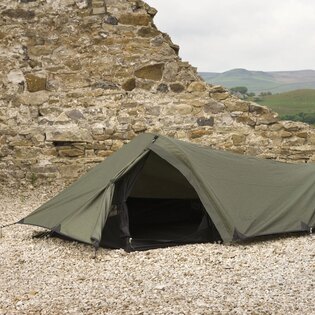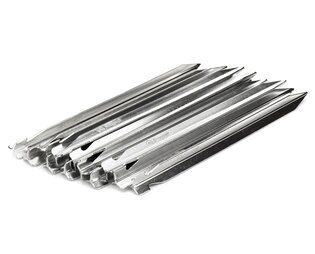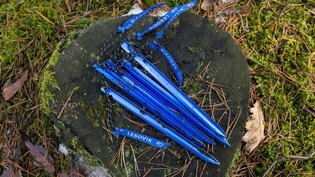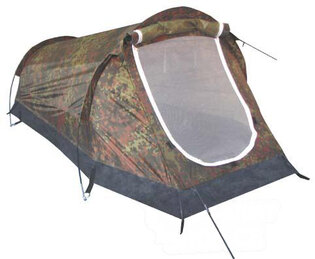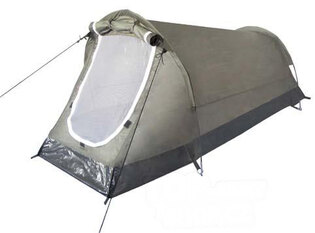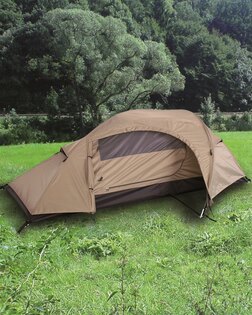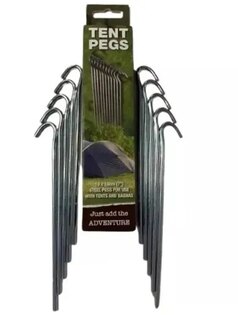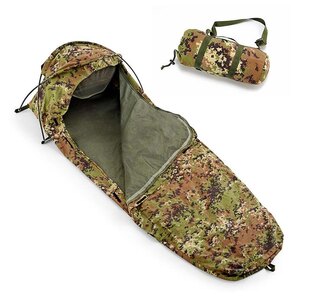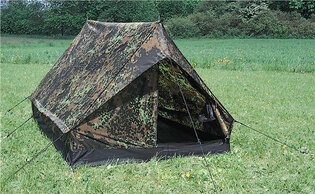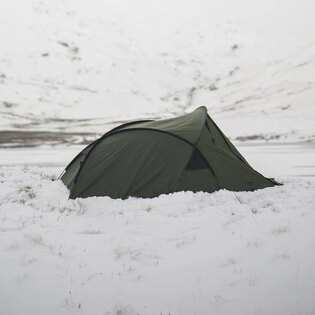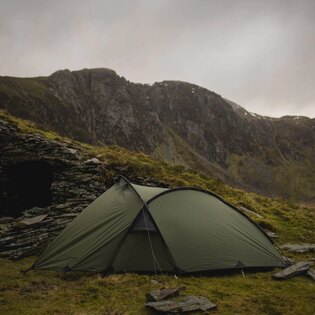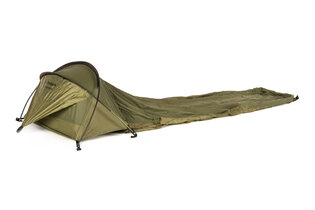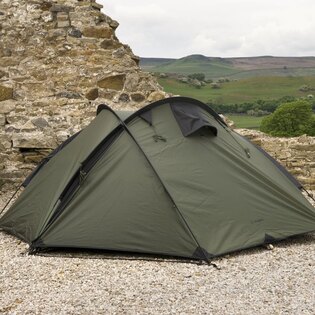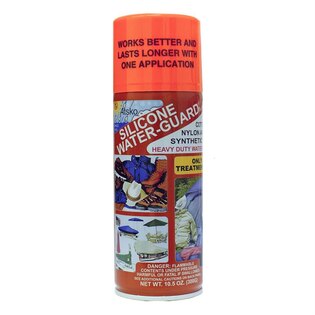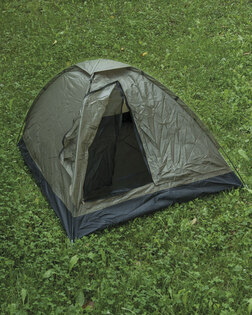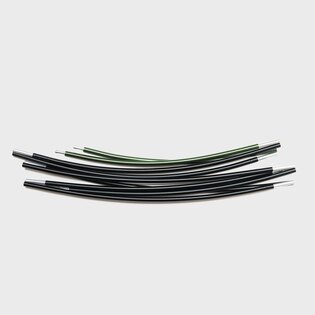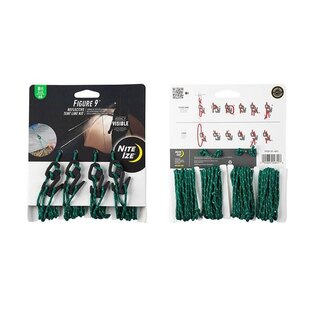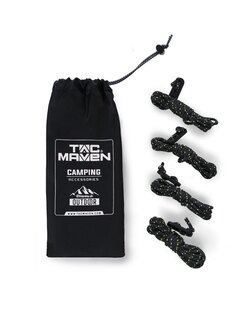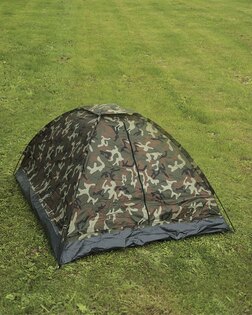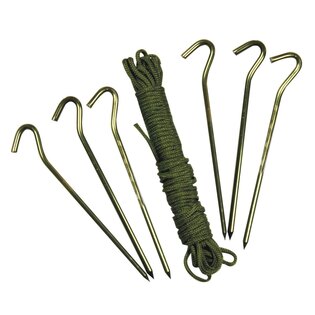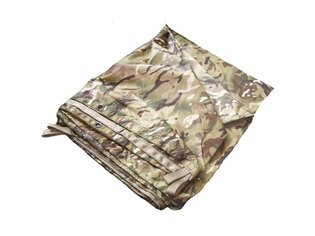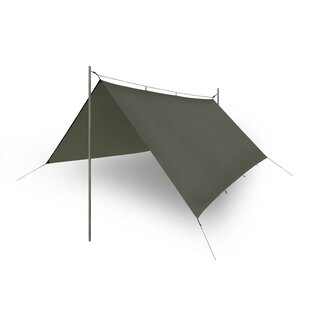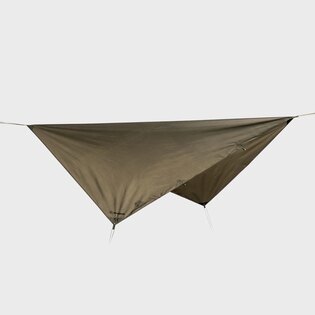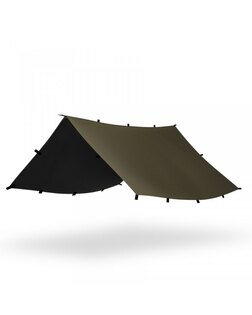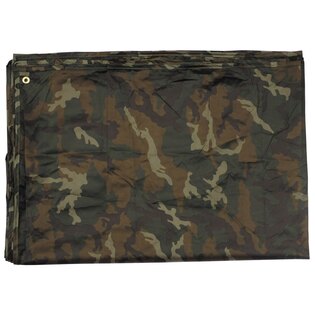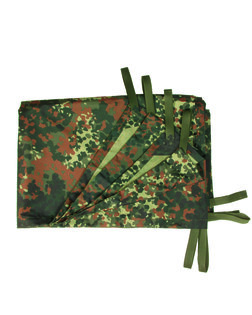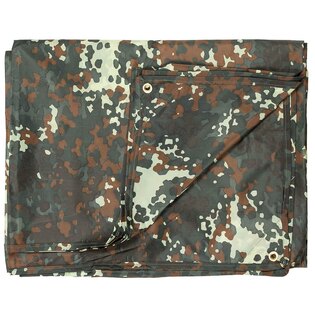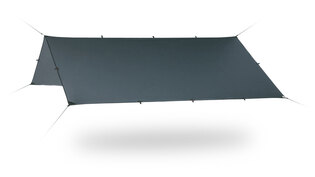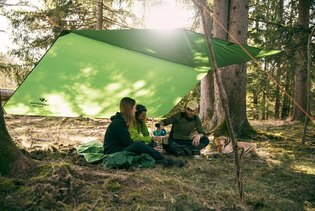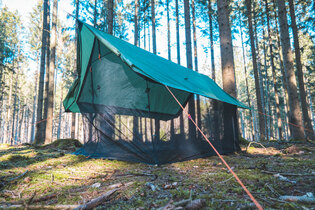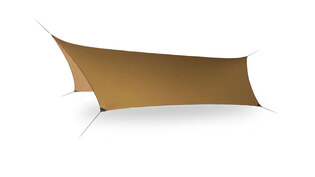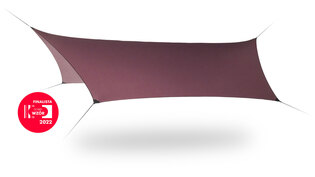How to choose a sail or a canvas tarp?
People (even the modern ones) don't really need that much to survive in the wilderness: a shelter, water, heat/fire and some food. As you can see here, the shelter has a separate category. This is no coincidence! Water and shelter are aspects that many tourists tend to underestimate.

While colourful tents usually tend to stand out from the nature (which has some benefits e.g. in case of a rescue), people usually choose canvas tarp or sail to blend in the nature as much as possible.
You don't necessarily need to have withstand some kind of natural disaster to be able to appreciate a good piece of sail or tarp – you can park your bike or car under your improvised shelter to protect it from the rain. You can use it as a raincoat for the whole group huddling together around fire. And there is more to come!
Getting ready for your forest adventure, one of the best things you can buy yourself is a good canvas tarp. The other side to the coin is that you need to know how to use it correctly to get the best performance, as the canvas tarp can be formed into dozens of different shapes.
If you are going to the woods for the first time, you'll probably want to sleep in a tent while giving yourself enough time and space to practise with a tarp and its different applications. A tarp (or two) was made for the intermediates. It's a good idea to get some experiences in safety before you set out on your first live adventure in the woods – ideally in the garden and not exactly in the sunny weather (in order to learn how to protect yourself and equipment from the rain coming from different directions, etc.).
How to choose a tarp?
Choosing the right one? Then you can consider these aspects:
- Ideal/maximum weight – all sails and tarps are usually relatively light (typically around 1 kg for one or two people). Of course, carrying two tarps plus some other outdoor equipment, the total weight gets higher. But, as far as your comfort is concerned, it's not necessary to carry a heavy tent when two tarps can do the same service for you.
- Material and colour – these days, sails made of leather are no longer being widely produced. They've been replaced with the synthetics. As for colour, a camo is a classic. However, it's all about the use. If you want to use your tarp e.g. for signalling, you'll be looking for something showy. From the extremely practical point of view – the darker the shade is, the faster it gets dry.
- How many of you are in there? – easy numbers – more people need longer and wider space. However, there is a certain maximum size. When exceeded, it's becoming difficult and even uncomfortable to build a functional shelter, especially in the woods – among all the trees, bushes and nettles. Therefore, it's up to you to weigh up whether two tarps of 6 x 4 metres will be better than one gigantic tarp of 10 x 15 metres. In short, a large tarp gives you more space but also more troubles with the (de)installing.
- Accessories – loops, eyelets, extra hems,… Just try to be aware of available accessories – tarps are waterproof by default. Many types of modern tarps have eyelets or loop which make it very easy to get fastened with a rope or a paracord. Some may have an extra reinforcement in the lower part. However, it differs from type to type, from manufacturer to manufacturer…
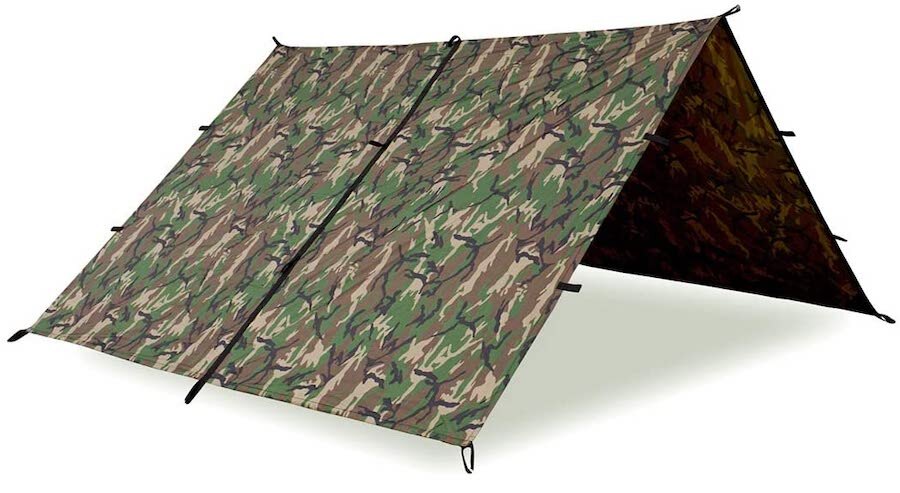
It's very important to choose the right size of your sail before the trip (or an outdoor event). Otherwise the new owner may be exposed to a number of difficulties he hadn't even expected.
What can a good piece of sail do for you out in the woods?
- It can work as an emergency shelter. Folding a sail in a half, leading a paracord in the middle and tying each end to a nearby tree is incredibly fast and easy, giving an instant protection from rain or sun. However, this doesn't protect you from the insects – carrying a mosquito net appears to be a good idea.
- Capturing rainwater – you may not trust the water puddle caught in a dirty sail (someone may find enough courage to drink it – all in all it's just about drinking smart without churning up the dirt laying on the bottom). However, you've got some extra water for free – directly from the woods. It's up to you whether you use it for brushing your teeth, washing either yourself or your dishes, putting out the campfire or waking up your friend with an icy splash. By the way, the whole process of catching water will be easier for you if you have a separate container for this purpose (e.g. a textile bucket).
- As a solar water purification system – this process gives additional filtering to water you had obtained from your surroundings (like grass dew caught in a towel). It works best with a transparent piece of plastic or a poncho/raincoat but you can also use a regular khaki sail. You simply dig a hole in the ground (about 1 x 1 m), put a suitable container on the bottom of the hole and add a liquid that contains some water (yes, also urine). Then, you cover everything thoroughly and place a stone on the top – exactly above the centre of the container. The sun will heat all the magic ingredients under the sail making a pure vapour rise from the surface and condense at the top. The law of gravity makes it to descend to the depression created by the stone.
- Keeping your body warm – when your buddy starts shaking with cold, just wrap him in the tarp. This helps to keep his body warm and dry. Do not wrap your buddy (or yourself) directly in a plastic sail! Due to the waterproofness, their sweat will not evaporate and humidity (e.g. from the rain) will also accumulate on the outer side of the surface. Getting more cold and wet is not what you want. Putting a dry tarp between two blankets appears to be a better idea!
- Emergency stretchers – did someone hurt their leg and cannot walk? You can use your tarp as a perfect improvised stretcher (you will need some extra reinforcement on both sides, such as two straight branches).
- Getting food - if you long for a real outdoor titbit, you can try this technique of obtaining a snack from an anthill. Beware: all these activities are against the law under standard circumstances. Do this only in emergency! The process is following: place the sail over the anthill and fold each side upwards by 15 cm (to form folds from above). Transfer a part of the anthill on the top of the sail (never the whole anthill otherwise the colony dies!). Give it a time. The ants will do their best to save their cocoons and hide them and themselves under the fold. You can pick and eat! Besides all of that, you can also carry some cones, mushroom, nettles and whatever the forest offers in your sail. Just don't forget to obey local rules!
- Life saving and signalling – quite surprisingly, the tarp can also be used for signalling. All you have to do is to create a contrast inscription on it and hope someone will notice it from far away (also from a helicopter). You can write “HELP” or “XXX” – even the most dull member of the mountain rescue service will understand that the three same letters or symbols mean: “We need help!”
- Animal trap – again, this is against the law. Use this skill only in case of emergency. Moreover, one day you can find yourself in a foreign wilderness where everyone get their food by hunting and trapping is allowed in there. All you have to do is to dig a hole and put something tempting or fragrant in there, cover with the sail and conceal the trap with some leaves and dirt. Be careful not to let your buddy – busy with picking berries – to break in it!
- A backpack – most people go to the woods with a proper sewn backpack. If you have enough sail and paracord or other kind of rope, you can make your own DIY backpack/bandolier model! Packing process is not complicated at all. The level of comfort is not that high though. You don't want to carry heavy things like this. However, as an experienced woodsman/avid minimalist you can save a couple of kilograms (modern medium-sized backpack weighs around 2-3 kilos).
- Emergency waterproof sleeping bag - it's not that difficult to make an improvised pocket out of a folded sail and a paracord – “sewn” through the eyelets/loops on the edges. You can also crawl in with your own sleeping bag in case it starts to rain. Sleeping under a tarp shelter, cosy in your tarp sleeping bag, no kind of rain can reach you.
- Transfering stuff – equipment, chopped wood, supplies, etc. from the point A to the point B. It doesn't matter whether you've found a pile of dry wood, lots of mushroom, rose hips or anything you've come across with. Your tarp will make a good job for you.
- Improvised vessel – this type of deployment requires some experiences, imagination and a certain degree of craftsmanship. All you need is a tarp of 3 x 4 m, paddles and a little creativity – and all of a sudden you've got a 10-kilo boat. Have fun!
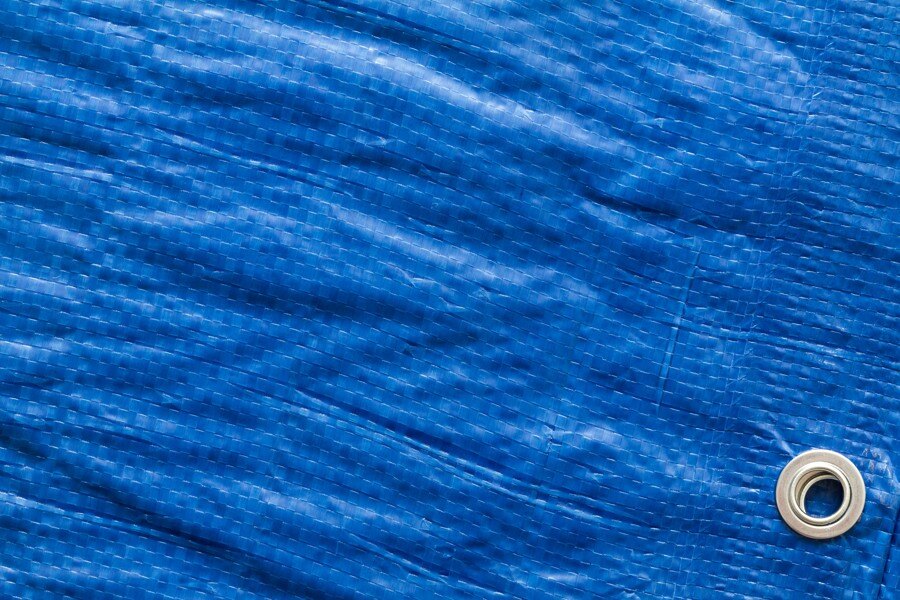
There is a wide range of tarp colours and shades available. However, nothing can stop you from grabbing a spray/brush colours and make your own design.
A tarp or a tent?
Standing between the shelves in your favourite armyshop, people usually find themselves facing a dilemma: “Do I need a tarp or a tent?” Let's take a closer look on this topic and consider the most common advantages and disadvantages of both. Here are some tips…
Advantages of tents:
Better protection – although there are dozens of shapes into which you can form your tarp (as even the youngest Scout knows), none of them gives you the same level of protection, insulation and zero permeability as a tent of a good quality does. Resting in a tent with an optimal water column, you can feel confident that you can make it through this dreadful weather in a comfort.
Easy to set up - the tent is very “instant”. Your home outside the civilization will be standing very quickly. There are certain types of environment where building a tarp shelter won't go easy, as tarps requires perfect fixation to stand firmly. This is not possible in all places. Setting up a tent with the inner pole is a matter of minutes.
Protection against animals – concerning the abilities of an average beast and ridiculously thin tent material, a tent rather represents a psychological boundary. However, it still offers a certain comfort zone. There were some cases where bears kept sniffing around a tent with no attempt to break in. If these people slept under a sail, this might have looked different.
Disadvantages of tents:
Weight and size – there are lots of types of tents these days. Some are even made of materials which are truly futuristic and have incredible properties. Despite of that, tarp is always more compact solution. Moreover, a tent cannot be used as a toll – a camper/survivalist with a sail always has it easier. You won't carry some firewood or mushroom crop you had found in the woods back to your spot in a tent. It can't be modified to improvised stretchers for your injured friend, a giant poncho for a bunch of people stuck in the rain, or a waterproof shelter for your firewood.
High costs – a perfect tarp will last for decades, which costs less than a tent of a comparative quality. In addition, high quality tents with good level of protection are not for free. And buying some other tent than a high quality would rather bring you fury than nice sleep and cheerfulness.

Tarps and sails have the right colours, sizes and features by default to protect from the rain, water and snow.
Advantages of tarps:
- Light and compact – the minimum size for one person is 2 x 3 m, or better 2,5 x 3,5 m. The minimum optimal size for more people is 3 x 4 m, but more is better. There larger tarps are still lighter than a tent.
- Versatility – tarps are mostly used as a form of a shelter. However, they have many more uses – as an emergency hammock over muddy ground, to collect water (when it's raining), etc.
- Costs – sails are very cheap. Probably 10 – 100 x cheaper than a luxury hi-tech tent, this item attracts thrifty people.
- Using a tarp, you can build a comfortable shelter on or even above the ground – if you've got the know-how (reading our survival online magazine). Just imagine sleeping in a comfortable hammock (tarp nr. 1) with a “roof” stretched above your head to protect from the rain (tarp nr. 2). To keep it short, two tarps and a paracord equals a perfect emergency shelter.
- As every orthodox woodsman surely knows, a tarp can also be used in combination with fire, which might be surprising for many others. If you are smart enough to build your shelter just to give you protection from the rain and yet you are able to make a campfire close enough to your tarp, you'll get something you can only dream of in a tent.
Disadvantages of tarps
- No insulation from the ground. This is something every tent counts with – a good insulation from all directions, especially on the bottom side. In case your tarp is large enough, you can fold a part of it under your body and use it as a shelter floor. But then you are likely to miss these precious decimetres somewhere else. Wet ground brings another kinds of inconvenience – your backpack and your dry clothes in it get wet, you can slip on the mud, etc. Therefore, it's wiser to carry two tarps: one as a floor and a windbreak in the most-exposed angle in one, and the second tarp as a traditional – and much more comfy now – A-shelter.
- Bugs and insects attack at night. A good mosquito net is a must-have for every hiker. A tent is closed and protected, with vent holes equipped with some kinds of mosquito nets. A tarp is obviously not, which means you won't enjoy your sweet dreams in areas full of insects. During the day, mosquito net gives protection against the ants and partly against the sun as well (relatively dense technical fabric).
- A solid shelter need some craft and experience. You just need to get a knack on that and – practise over and over again to find out which types of shelter work for you and which don't. Give it a dry run in your garden first. If you don't know what to expect from a tarp, you can't wait for a miracle out in the woods and you will hardly live to see some comfort…
Readers are further interested







































































































































